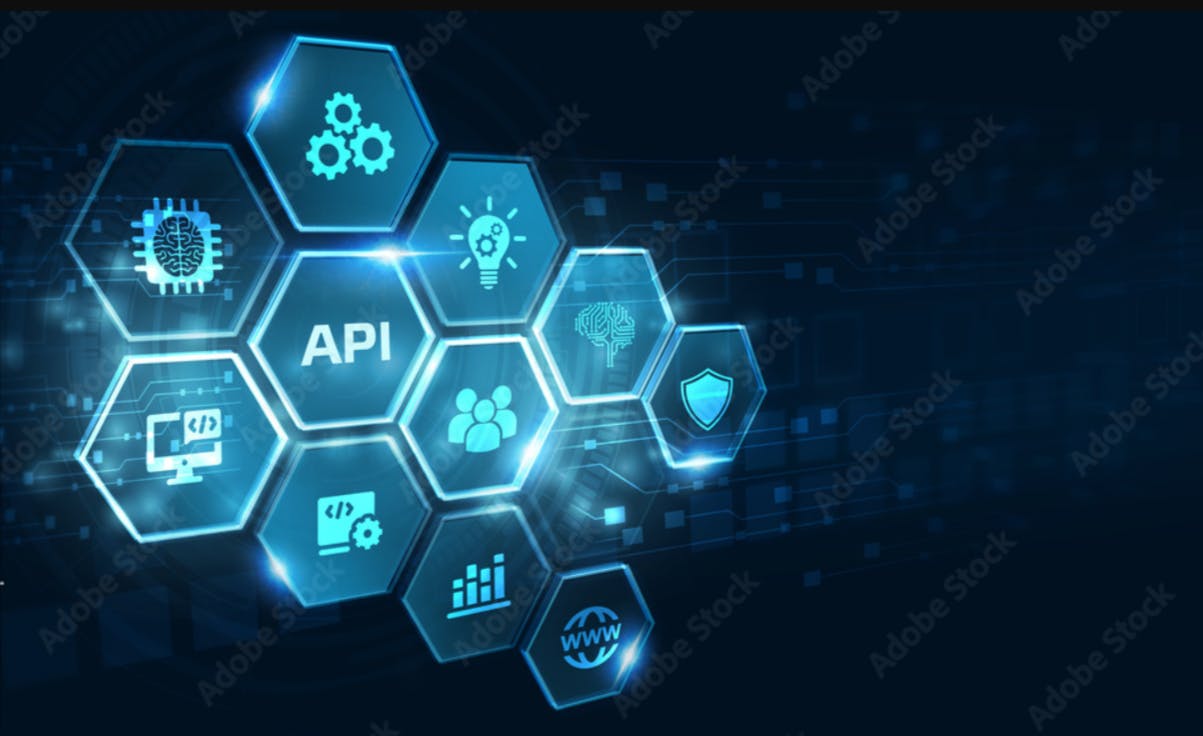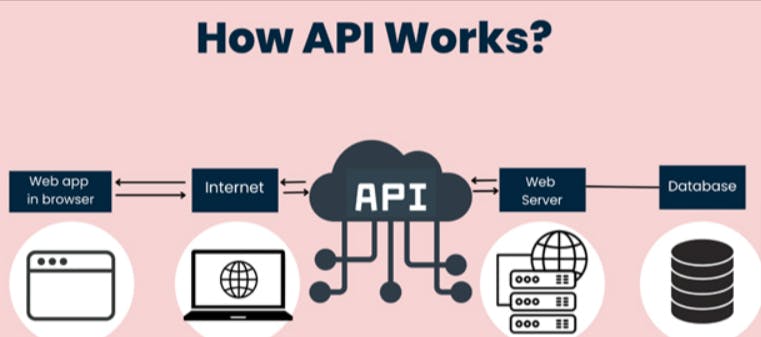"Unlocking the Potential of APIs: An Introduction to Basic Types"
"Building Bridges with APIs: Connecting the Digital World for Seamless Integration and Innovation."

API stands for Application Programming Interface. It is a set of guidelines and protocols that allow distinctive software program programs to communicate and engage with each other.APIs define how special software program additives or structures can interact and change records in a standardized and based way, enabling them to Paintings together seamlessly.
A weather app can use an API to get the current temperature for a city instead of collecting data itself.
Social media platforms allow third-party apps to access their data through APIs, enabling developers to build integrations like post-scheduling or analytics.
How API works?

Application Programming Interfaces are sets of protocols, routines, and tools for building software applications. They allow different software programs to communicate with each other by exchanging data and requests in a standardized way.
When a software program needs to access data or functionality from another program, it sends a request to the API, which then processes and responds to the request with the requested data or functionality. This process enables software developers to build applications that are interoperable and can leverage the functionality and data of other programs, without having to build everything from scratch.
A real-life example of how APIs work:
Imagine you're using a travel app to book a flight. The app doesn't have access to the airline's reservation system, but it can use its API to retrieve flight information and book a seat. When you select a flight and enter your payment information, the app sends a request to the airline's API with the necessary details. The API then processes the request and returns a confirmation code, which the app uses to finalize your reservation. Without the API, the travel app wouldn't be able to access the airline's reservation system and you wouldn't be able to book your flight through the app.
Why would we need an API?

APIs are used for many reasons, some of which include:
Integration: APIs allow different software applications to communicate and share data seamlessly, which enables businesses to integrate their systems and processes more easily. This can lead to increased efficiency and reduced costs.
Automation: APIs can be used to automate repetitive tasks, which can save time and reduce the risk of human error. For example, an e-commerce business may use an API to automatically retrieve shipping rates from a carrier's website, instead of manually looking up the rates for each order.
Customization: APIs can be used to create custom software solutions tailored to specific business needs. This can provide a competitive advantage by enabling businesses to offer unique products or services that meet the needs of their customers.
Improved User Experience: APIs can be used to enhance the user experience of software applications. For example, a mobile app that uses a weather API to provide real-time weather updates can provide a better user experience than an app that requires users to manually enter their location and check the weather.
New Business Opportunities: APIs can be used to create new business opportunities by enabling businesses to monetize their data or services. For example, a social media platform can offer APIs that allow third-party developers to build applications that integrate with the platform, creating new revenue streams.
Types of API
RESTful APIs: REST (Representational State Transfer) APIs are the most popular type of API. They use HTTP requests to GET, POST, PUT, and DELETE data from a server. RESTful APIs use standardized methods to represent data in various formats such as JSON or XML.
SOAP APIs: SOAP (Simple Object Access Protocol) APIs are based on the XML messaging protocol and use XML to encode data. SOAP APIs are known for their strong security features, but can be slower than RESTful APIs due to the overhead of the XML format.
GraphQL APIs: GraphQL APIs are designed to give clients the power to request exactly the data they need, and nothing more. Instead of multiple RESTful API endpoints returning a fixed data set, a single GraphQL API endpoint can return data in response to a client-defined query.
WebSocket APIs: WebSocket APIs allow for bidirectional, real-time communication between clients and servers. They are commonly used in online games, chat applications, and other applications that require real-time data exchange.
JSON-RPC APIs: JSON-RPC (Remote Procedure Call) APIs allow for remote procedure calls using JSON as the data format. They are a lightweight alternative to SOAP and are often used in client-server architectures.
Application of API
Social media platforms such as Facebook, Twitter, and LinkedIn offer APIs that allow third-party developers to create applications and automate tasks like social media posting and analytics.
E-commerce businesses use APIs to integrate with payment gateways, shipping carriers, and other service providers, enabling them to automate tasks such as order fulfillment, shipping, and payment processing.
Mobile app developers use APIs to access data and services from third-party providers, such as weather data, location data, and payment processing services, allowing them to focus on building a great user experience.
Financial services companies use APIs to provide real-time data to customers and partners, such as stock quotes, account balances, and transaction history, enabling them to offer personalized financial advice and insights.
IoT devices use APIs to communicate with each other and with cloud-based services, enabling businesses to collect and analyze data from IoT devices and automate actions based on that data.
AI developers use APIs to access pre-trained models and machine learning services, allowing them to build AI-powered applications more quickly and efficiently.
In summary, an API (Application Programming Interface) is a set of protocols, tools, and standards that allow different software applications to communicate and share data with each other. APIs are used for integration, automation, customization, improving the user experience, and creating new business opportunities. There are several types of APIs, including RESTful APIs, SOAP APIs, GraphQL APIs, WebSocket APIs, and JSON-RPC APIs. APIs are essential for modern software development and play a critical role in enabling businesses to leverage the power of data and software to improve their operations and better serve their customers.
